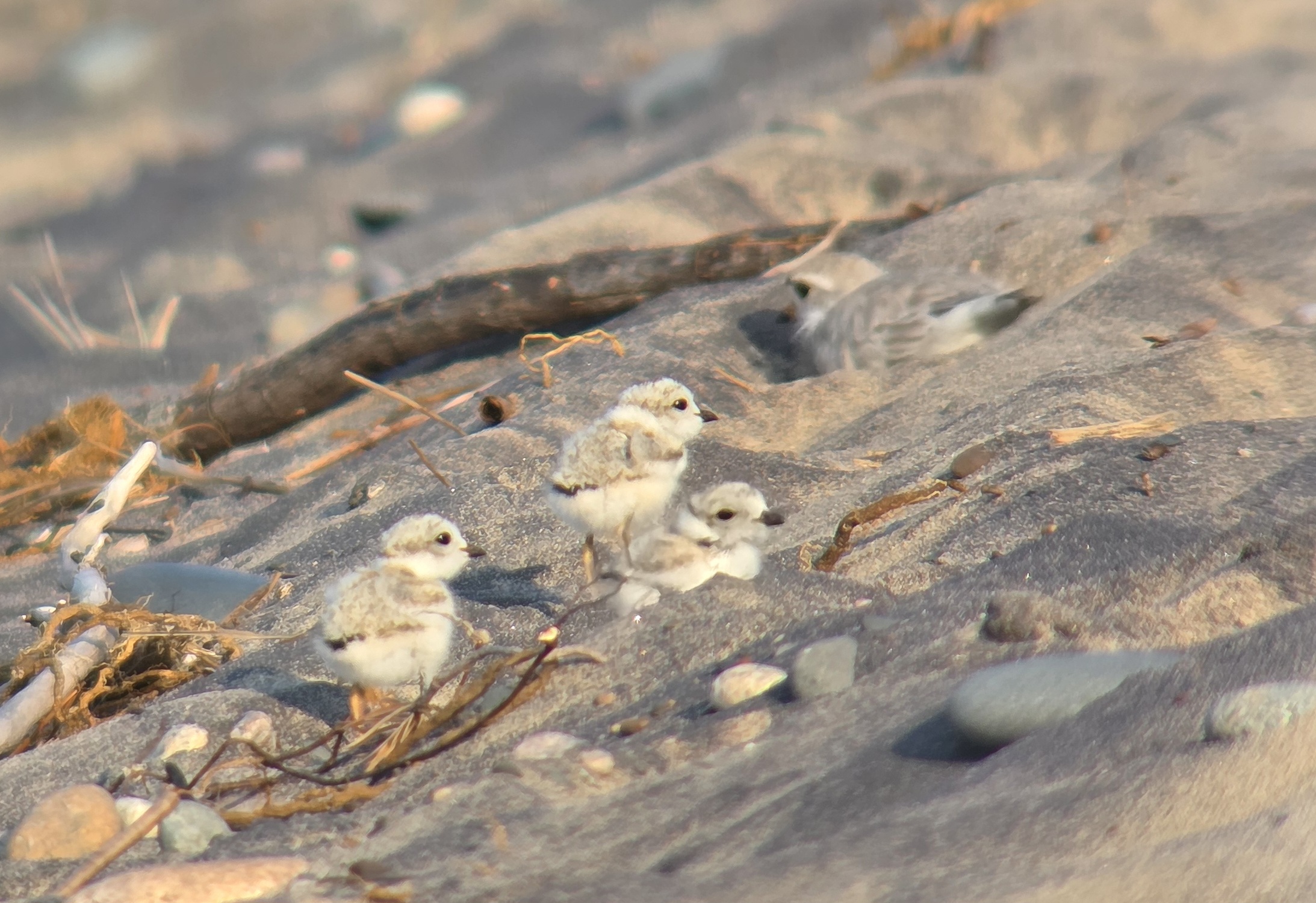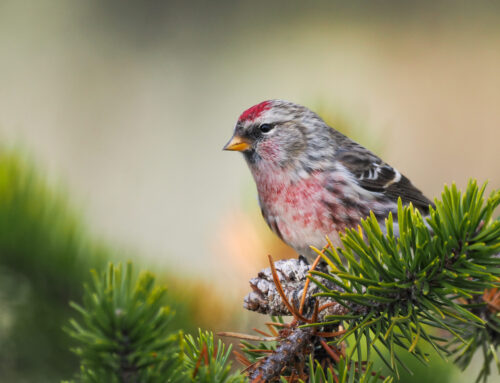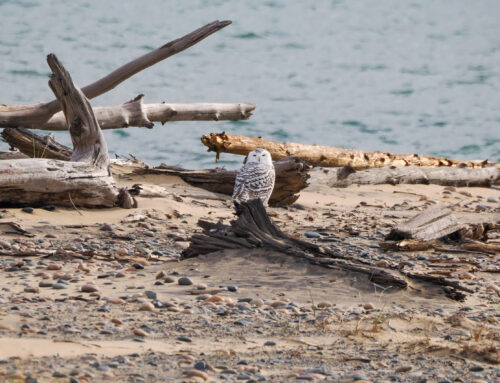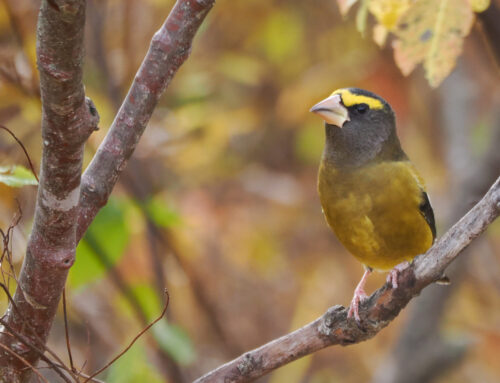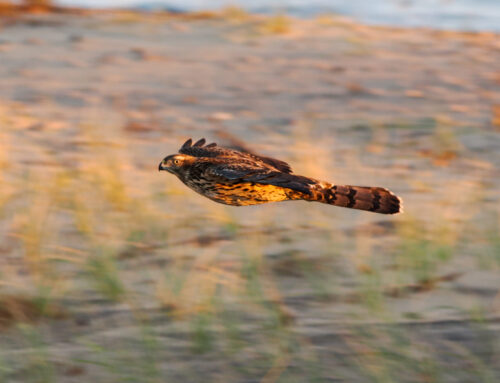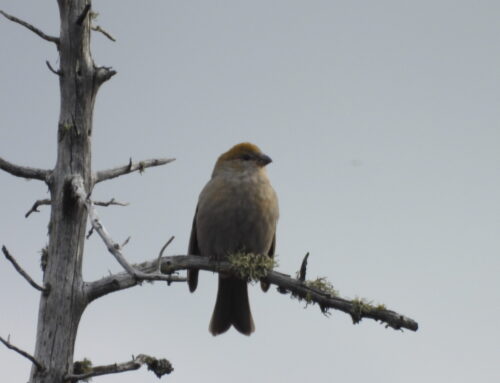Whitefish Point
Vie and Little Bill Bob’s life had been going swell for six days, making their way to and from across the shore with four healthy chicks. Until June 28, when Bob went missing. And on Monday the 30th, the chick count decreased to three. The remaining family has held strong and Vie persists working hard as a single mother. Sometimes I find her actions questionable, as she’ll fly away from her brood for a few minutes. The three chicks will scatter across the beach, weaving through unaware visitor’s feet. My heart stops when this happens, but she always returns and gathers her young, retreating from the crowds. The hope is that Vie continues overseeing the chicks at least until their July 12 fledge date (when they’ll be able to flee dangerous situations through flight). Most female Piping Plovers leave for their wintering grounds in early to mid-July. Vie hung around until July 20 last year, so I have optimism she’ll stay until the chicks can fly.
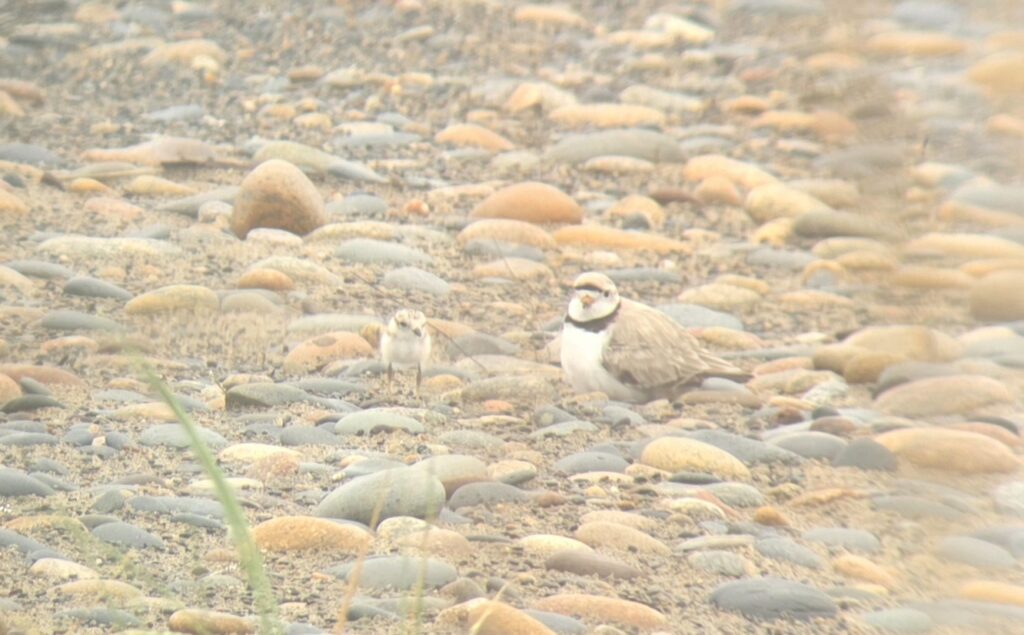
PIPL Little Bill Bob and his chick. Photo by Stephanie Owens
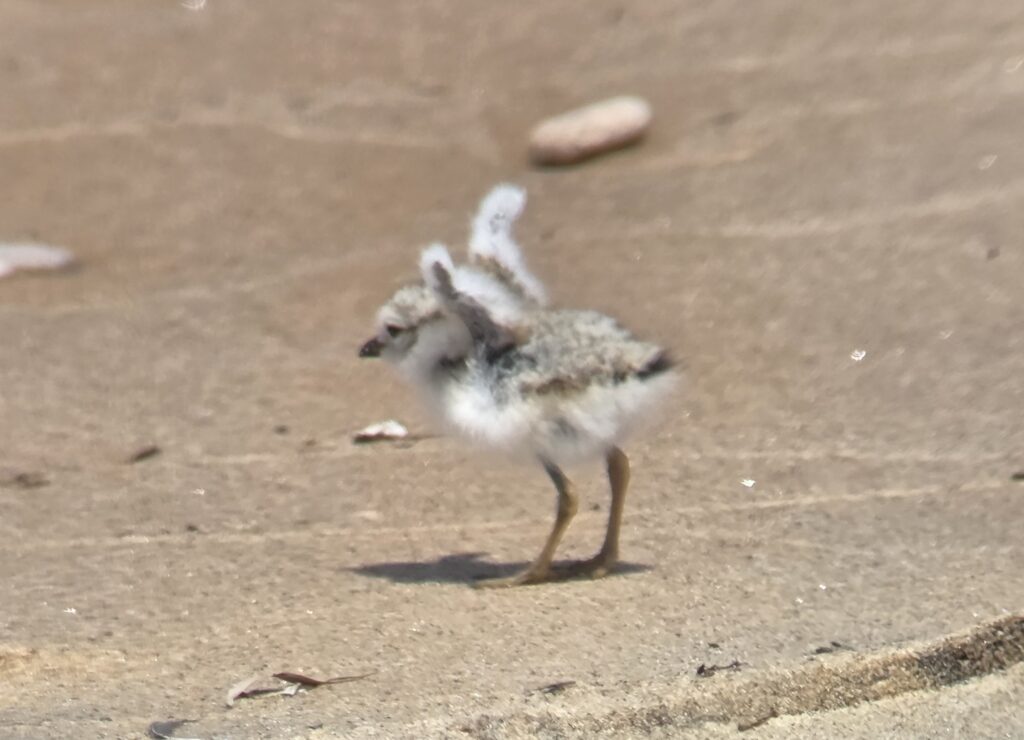
A PIPL chick at WPBO stretches its wings. Photo by Stephanie Owens
On July 1 two female Captive Reared chicks were released at the Point! Their band combinations are X,L/O:Of,VL and X,L/O:Of,GR. Going along with the traditional naming scheme based off their band combo, I’ll call them LOVeLy, and LOGgeR. Their release went far smoother than last year, when Hot Shot and YB harassed the poor chicks the moment they stepped foot on the shore. This time, the two ladies were left alone to explore the new habitat at their own pace. They walked around for a few minutes and in time began flying around awkwardly. The following day I was able to observe Lovely, and I believe Logger was hiding somewhere. They’re kind of difficult to find, being so quiet I practically stumble upon them.
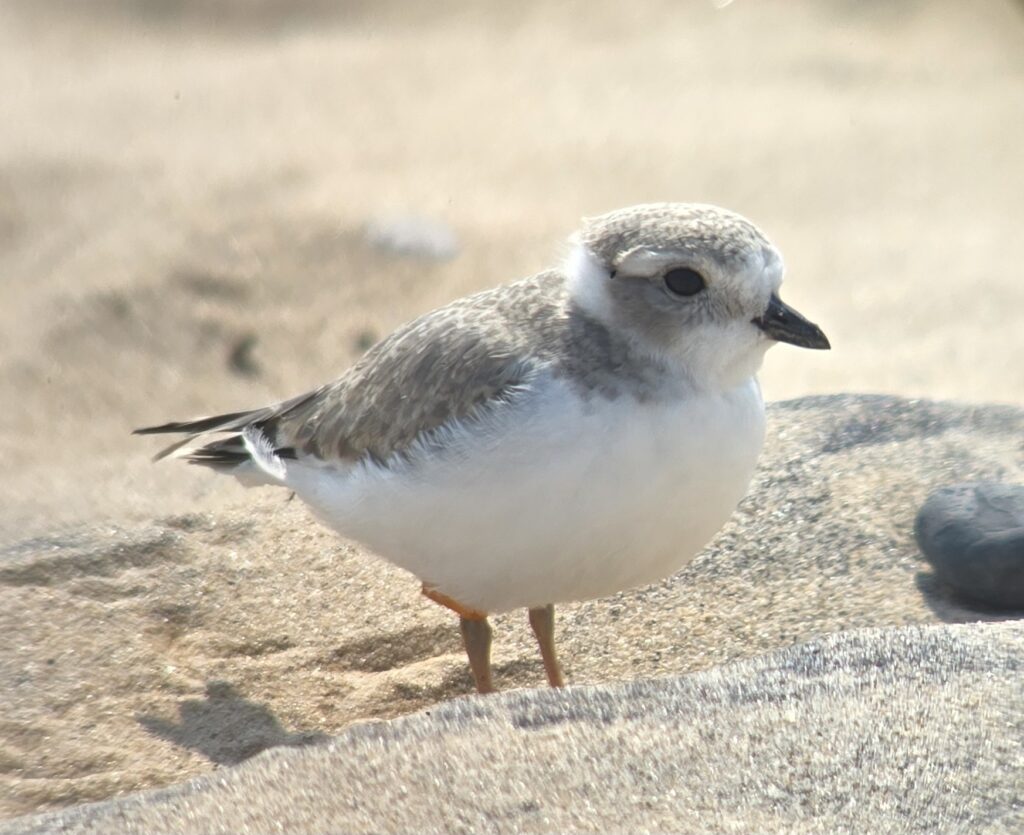
Captive Reared chick Lovely rests at the Point. Photo by Stephanie Owens
Vermilion Point
I had my doubts, but Rusty and Gladys did it! Two chicks hatched on June 27. For at least two more days the parents continued tending to the last egg, but on July 2, I found that the chick was unable to make it through hatching. It had made a small hole in the shell, but I believe it was mispositioned inside and could not continue. I had trouble finding the family that day and finally discovered them maybe half a mile westward. I was only able to see one chick, but the other could’ve been acting sneaky. With the parents being skittish as usual, I kept my distance and eventually let them be. A team from Lake Superior State University will be taking over monitoring the site now, but I’ll try to update you all on their progress towards the end of the season.
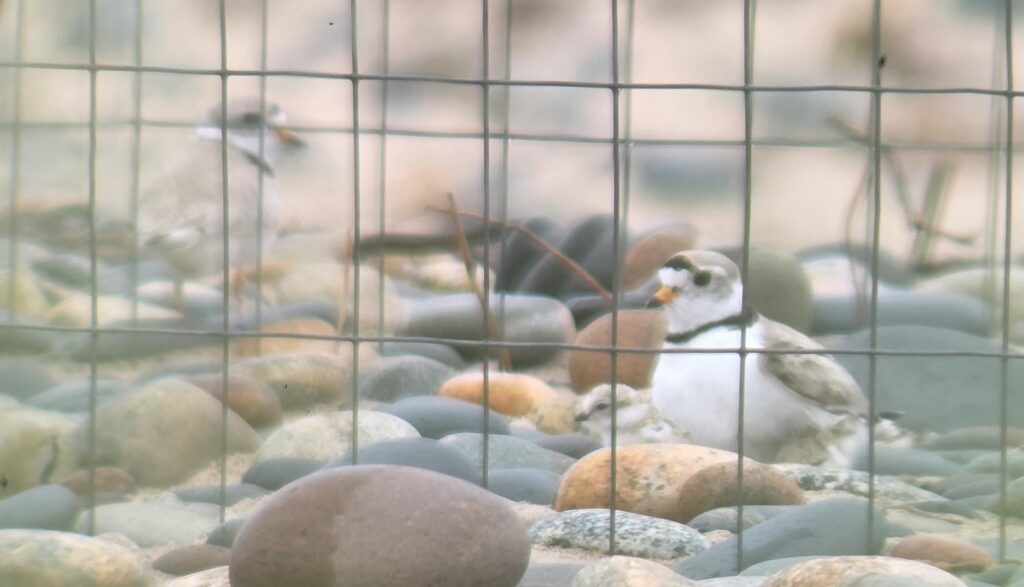
Vermilion PIPL Rusty warms his newly hatched chicks and continues incubating the final egg. Photo by Stephanie Owens
~ Stephanie Owens, 2025 Piping Plover Monitor
Featured Photo: PIPL Vie hides in the sand with her three chicks as a Gull passes overhead. Photo by Stephanie Owens
Piping Plover monitoring is a collaborative effort between Michigan Audubon and Seney National Wildlife Refuge (USFWS).
You can keep up with the 2025 Piping Plover action at WPBO by reading Stephanie’s blog posts and following WPBO’s social media (Facebook, Instagram, and X).
Stephanie Owens: 2025 Piping Plover Monitor
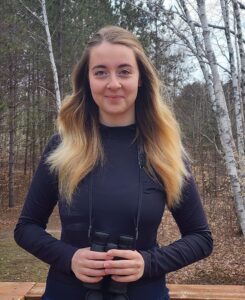 Having grown up in the Upper Peninsula of Michigan, an appreciation of the outdoors seemed inevitable for Stephanie. Walks in the woods with her father and high school science courses helped her identify this passion. In 2024, she earned a Bachelor of Science in Conservation Biology from Lake Superior State University, where she completed her senior thesis on the distribution of per- and polyfluoroalkyl substances in Eastern Upper Peninsula waterways. Now, with three seasons of PIPL monitoring under her belt, she looks forward to another summer with the U.P. plovers and returning to WPBO after a successful ’24 season. After the end of last season, Stephanie began her work at Eva Burrell Animal Shelter as a canine caretaker, fostering hope and love for all animals there.
Having grown up in the Upper Peninsula of Michigan, an appreciation of the outdoors seemed inevitable for Stephanie. Walks in the woods with her father and high school science courses helped her identify this passion. In 2024, she earned a Bachelor of Science in Conservation Biology from Lake Superior State University, where she completed her senior thesis on the distribution of per- and polyfluoroalkyl substances in Eastern Upper Peninsula waterways. Now, with three seasons of PIPL monitoring under her belt, she looks forward to another summer with the U.P. plovers and returning to WPBO after a successful ’24 season. After the end of last season, Stephanie began her work at Eva Burrell Animal Shelter as a canine caretaker, fostering hope and love for all animals there.

